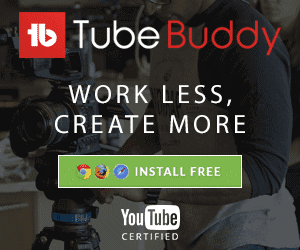Keywords are the first steps and building blocks to optimizing your YouTube video. You’ll probably have heard about using your keywords here and there, and including so many, or so few, but what are keywords on YouTube?
In this article, we’re going to cover just that and answer the question, while highlighting the different types of keywords you should know about.
So, what are keywords on YouTube?
Keywords on YouTube are words and phrases that help give YouTube and other search engines context about what your videos, playlists, and YouTube channel is about. Keywords are specifically there to provide YouTube with more context as to who the target audience of your videos is and for your viewers to find your videos.
Now that you know what keywords are, let’s take a look at the different types of keywords for YouTube.
Different Types of Keywords on YouTube
YouTube Keywords come in different types.
The main keywords that you will be adding to your videos and playlists for search ranking purposes can depend on the size of your channel, the topic of your video, and the amount of keyword research you’ve done on the topic.
Overall though, you’ll run into 4 different types of keywords, and these all have different uses and purposes.
This is very important to understand keyword research and find keywords that will get your channel views (regardless of size).
These are also important factors in optimizing your YouTube videos.
Head Keywords
Head keywords, sometimes also referred to as “head terms”, are popular and broad keywords that get a lot of search traffic because they represent very broad topics.
These keywords can be quite short, generally consisting of 1-3 words.
Some examples: Nike Shoes, microphones, fish tanks, etc.
These keywords are not ideal because they represent a very broad topic. This means that they will be 1). very difficult to rank for, and 2). your video will very often not be relevant to the search intent of the person that found it if it did somehow rank for one of these terms.
I.e., If your video is about “the best Nike shoes for runners”, someone that types in Nike shoes may be rather interested in; purchasing Nike shoes, finding out how they’re made, specials to save money, sport-specific shoes, etc.
This results in a low CTR (Click-Through Rate) and Retention Rate which will negatively affect your video and future videos.
Long-tail Keywords
Long-tail keywords, sometimes also referred to as “keyword phrases”, are more specific and therefore less popular terms.
These often receive far less search traffic, which makes them less competitive, but the traffic that they do receive is more aligned with the topic of the video.
Therefore, increasing the CTR and retention rate of your videos.
In the previous example, “best Nike shoes for runners” would be a long-tail keyword. The phrase is specific to what someone would be looking for and a lot less competitive than just “Nike shoes”.
You can easily judge the competitiveness and search volume of a keyword or long-tail keyword using the free TubeBuddy browser extension.
This helps save you time and can also give you ideas on long-tail keywords you would maybe not have come across yourself.
Variant Keywords (LSI Keywords)
Variant Keywords also referred to as “LSI (Latent Semantic Indexing) Keywords”, are synonyms and different ways of saying your particular keyword.
Oftentimes, there are multiple ways to say something, which also means they could have a completely different meaning to how you are using them.
This is where keyword variants help provide more context as to what your video is about and what the keyword actually means so that the right people can find your video more easily.
For example, if the word “picture” is a part of your main keyword, LSI variants could be a photo, image, painting, drawing, etc.
All of those words independently seem like reasonable LSI variants, but what if I said the long-tail keyword is “how to capture winter landscape pictures”.
Now only photos and images make sense from an LSI keyword perspective and help classify what this video is about.
Using these keywords also then helps in ranking your videos when someone uses one of these variant terms, even if it isn’t used entirely in your video title.
Topic Keywords
Topic keywords are similar to head keywords in that they are more broad-based keywords, these keywords focus more on the specific topic areas your video falls into or the niche areas.
Based on the previous examples, how to take winter landscapes would fall into the topic keywords of “photography”, “landscapes photography”, “photography tutorial”, etc.
Like LSI keywords, these types of keywords are there to provide YouTube with context and to help categorize your videos so that it is shown to people with a higher likelihood of interest in your videos.

Final Thoughts on YouTube Keywords
YouTube Keywords are the “magic sauce” when it comes to ranking your YouTube video and ensuring you reach the right people.
By recognizing what different keywords there are, you can carry out more effective keyword research, which will ultimately result in your videos appearing higher in search results, getting more views, and gaining more subscribers.
I hope this article has been helpful to help get started using keywords or helped to understand the differences and what a long tail keyword is.
Next, read this guide on how to do effective keyword research for your channel here.

